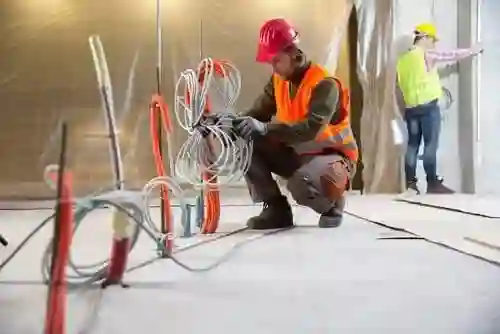
Unveiling the Underground: Strategies for Residential Oil Tank Removal
Beneath the serene exterior of many residential properties lies a hidden concern — underground oil tanks. These aging structures, remnants of a bygone era, pose potential environmental and safety risks. Residential oil tank removal demands a strategic approach to unveil and address these concerns responsibly. From site assessment to community engagement, a comprehensive strategy ensures a safe and environmentally conscious process.
Initial Site Assessment: Peering Beneath the Surface
The journey to responsible residential oil tank removal begins with a meticulous site assessment. Specialized tools, such as ground-penetrating radar and soil sampling equipment, aid in revealing the condition of the tank and any potential soil contamination. This initial step is crucial in understanding the scope of the project and tailoring the removal strategy to the specific conditions of the site.
Detailed site assessments also involve historical research to uncover the tank’s installation date, maintenance history, and any previous leak incidents. This information is instrumental in assessing the potential risks associated with the tank and informs subsequent steps in the removal process.
Regulatory Compliance: Navigating the Landscape
Navigating the regulatory landscape is an integral part of residential oil tank removal. Local and state regulations often dictate specific protocols for the removal and disposal of underground tanks. Professionals in this field must stay abreast of evolving guidelines, obtain necessary permits, and adhere to established procedures to ensure compliance.
By navigating the regulatory landscape diligently, professionals not only fulfill legal requirements but also establish a framework for environmentally responsible tank removal. Compliance guarantees that the removal process aligns with environmental protection standards, safeguarding both the property and the surrounding ecosystem.
Safe Excavation Techniques: Minimizing Disruption
Excavation, a central aspect of oil tank removal, must be approached with caution to minimize disruption to the residential property. Traditional excavation methods can be invasive, potentially damaging landscaping, driveways, or other structures. Employing advanced techniques, such as horizontal drilling, allows professionals to access and remove the tank with minimal disruption to the surface.
This less invasive approach preserves the aesthetics of the property and reduces the need for extensive restoration after the removal process. It is a strategic choice that aligns with the goal of minimizing the impact on the homeowner’s investment while ensuring the safe extraction of the underground tank.
Contamination Remediation: Nurturing the Soil Back to Health
In cases where soil contamination is identified during the removal process, strategic remediation is paramount. Rather than opting for complete soil removal, eco-friendly solutions such as bioremediation can be employed. Microorganisms are introduced into the soil to break down and neutralize contaminants, promoting a natural restoration process.
Remediating contaminated soil on-site not only reduces the environmental impact but also offers a cost-effective alternative to off-site disposal. This approach nurtures the soil back to health, transforming a potential environmental concern into an opportunity for sustainable restoration.
Recycling and Sustainable Disposal: Minimizing Waste
Residential oil tank removal generates various materials, from the tank itself to surrounding soil and other components. Embracing sustainable disposal practices involves recycling materials whenever possible. Tanks made of materials like steel can be sent to recycling facilities, contributing to the reduction of demand for new raw materials and minimizing waste.
Additionally, concrete slabs covering the tank can be crushed and repurposed as aggregate for construction projects. This circular approach to waste management aligns with the principles of sustainability, promoting the efficient use of resources and minimizing the environmental impact of the removal process.
Community Engagement: Building Trust and Transparency
Residential oil tank removal is not merely a technical process; it’s a collaborative effort that involves the homeowners and the surrounding community. Transparent communication about the removal process, potential risks, and safety measures builds trust and ensures that residents are well-informed.
Community engagement goes beyond information sharing. It involves addressing concerns, answering questions, and incorporating local knowledge into the removal strategy. By actively involving the community, professionals create a shared understanding of the process, fostering a sense of responsibility and environmental stewardship.
Conclusion
Unveiling the underground world of residential oil tank removal requires a multifaceted strategy that integrates technical expertise, regulatory compliance, and community engagement. By adopting advanced assessment tools, minimizing disruption through safe excavation techniques, embracing contamination remediation, recycling materials, and engaging with the community, professionals can ensure a responsible and environmentally conscious removal process.
Residential oil tank removal is not just about uncovering what lies beneath the surface; it’s about revealing a commitment to environmental sustainability and community well-being. Through thoughtful planning and execution, the strategies employed in residential oil tank removal can set a precedent for responsible environmental practices in the residential sector.





